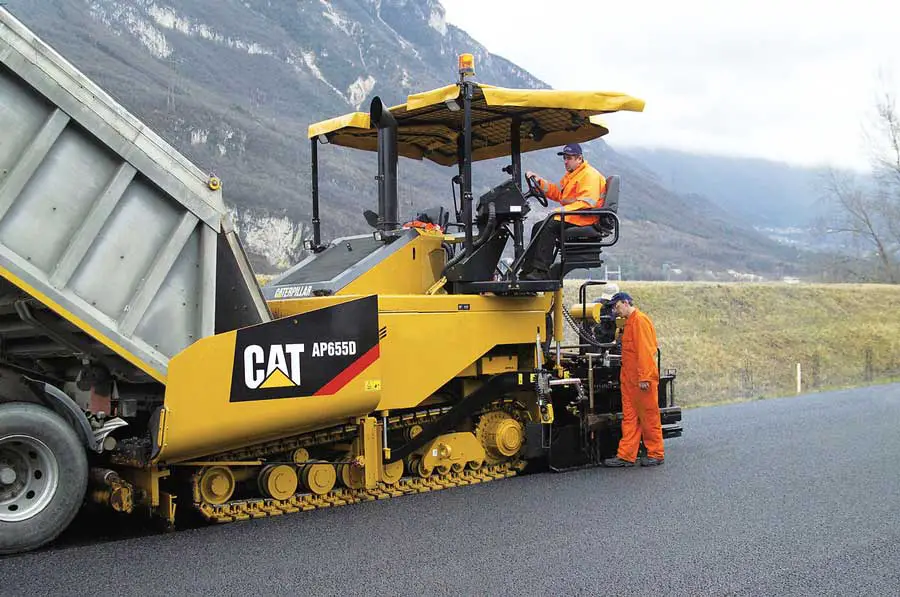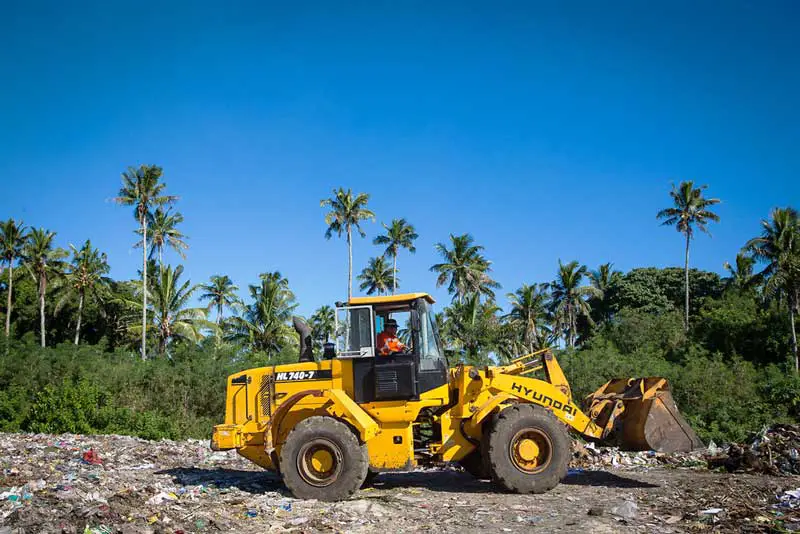The industrial world, large or small, needs to be familiar with industrial trucks. One of them is forklifts.
A forklift is a vehicle that serves as a tool for moving goods with large loads. This large vehicle is very practical to support the production process or to move goods in the warehouse.
In every company warehouse, there is usually a forklift to mobilize goods. Forklift trucks are able to lift objects weighing dozens to hundreds of kilograms with the help of two ferrous metal forks.
What is a forklift
A forklift is a type of mini-truck that is used to lift, move, and lower heavy goods from one location to another. Raised objects are objects that are heavy or too heavy for people.
Forklift work can be done indoors or outdoors, such as loading and unloading goods in ports, warehouses, factories, expeditions, supermarkets, and more.
The forklift truck increases the effectiveness and efficiency of business operations. The use of forklifts can also relieve employees, especially when transporting goods.
Well, you need to know that there are several different types of forklifts currently based on their function. Let’s see what types of forklifts are commonly used.
Types of Forklift
1. Warehouse Forklift

This forklift resembles a yellow golf cart with twin forks that extend out the front. This warehouse forklift is ideal for balanced loading and unloading of pallets or materials.
In addition, this warehouse forklift is best suited for moving and transporting goods from delivery vehicles.
2. Side Loader Forklift

Side loader forklifts have a characteristic that fork position is to the side of the forklift, not in front. Its function is to handle long items such as wood and pipes and it is very suitable for narrow corridors.
3. Counterbalance Forklift

Counterbalanced forklifts are forklifts controlled by the fork at the front and the weight at the rear of the vehicle to balance the weight of the load.
We see this type of forklift often and it is the most widely used. A heavy load (or counterweight) at the rear prevents the forklift from tipping forward while the load is being lifted.
The operator simply carries it to the pallet or rack, then lifts it, directs it to the destination, lowers it, and then returns.
4. Telehandler

The telehandler is a multipurpose lifting tool that has a telescopic arm equipped with a lifting accessory.
5. Rough Terrain Forklift

These trucks have strong pneumatic tires that help them navigate rocky terrain. The specialty tires are large and threaded, giving them better balance and stability to transport materials safely.
6. Pallet Jack

The pallet jack is designed to lift and stack pallets only. The operation can be manual or electric and the price is cheaper than counterbalanced forklifts. Very useful if used in a warehouse that does not move too much.
7. Walkie Stacker

Unlike other forklifts, this material handling vehicle does not have a cab. Instead, the worker walks behind the stacker and directs it using the attached handle.
Electric pallets are equipped with motors to lift the load and also to help the forklift move back and forth so the operator does not have to push or pull it.
The principle is the same as the manual pallet, but this type of forklift can move quickly when lifting loads in the warehouse.
8. Order Picker

The order picker is a subtype of the walkie stacker, used to retrieve and ship materials from storage.
This type of forklift requires the operator to stand in an elevated compartment in order to retrieve items from the shelf. Although not technically a ‘forklift’, the principle of operation is the same as that of a forklift.
9. Reach Fork Truck

The reach truck can reach loads up to 10 meters high and is used in warehouses with high aisles to maximize space. Some are equipped with an operator seat, while others are for standing only.
Read more: Names of Construction Vehicles
Forklift Machine
1. Forklift with Automatic Transmission
Automatic transmission forklift or automatic forklift is a type of forklift that is very easy to use than a manual forklift. The difference between these two forklifts lies in the lever handle.
Automatic forklifts only have 3 parts of the handle lever, namely the lift up and down, back and forth, and the tilting mast. The lower pedal of an automatic forklift is used as a brake.
When you want to operate this forklift, all you have to do is move the road handle forward or backward and then step on the accelerator or brake to operate the forklift as you would an automatic car.
2. Forklift with Manual Transmission
Hand forklifts or hand forklifts are more difficult to operate than automatic forklifts. Manual forklift operation is almost the same as that of a car in general, which has accelerator, clutch, and brake pedals.
There is no back and forth lever on manual forklifts. Manual forklifts have aisle and lever handles for raising and lowering and a tilting mast.
Forklift Parts

Knowing the parts of a forklift will help you identify damage to forklift replacement parts. To do this, you need to know the parts of the forklift and their functions.
1. Fork
The fork is the main part of the forklift. This section has the function of supporting, carrying, and lifting goods. The fork is made of long and straight iron.
The standard fork length is 1070mm or 1.07m, however, fork extensions can be added in this section if a longer fork is desired.
Before using a forklift, you need to determine the width, dimensions, and capacity of the load to be lifted. Then place the load on the fork and adjust the width of the fork so that the load to be lifted or moved is safe.
2. Mast
One of the most important and important parts of a forklift truck is the mast. The mast on a forklift is a part that acts as a support for the forklift.
The mast consists of two thick irons with hydraulic components in between. The hydraulic function of the mast is to raise or lower the goods on the fork.
3. The Slide
The slide on the forklift is used to connect the fork to the forklift mast. The slide also serves as safety support for objects that are above the lifting mast.
4. Protective Roof / canopy
A driver’s canopy, also known as a forklift canopy, is one of the forklift components whose function is to protect the operator when working with a forklift truck.
In addition, the presence of an overhead guard prevents the operator from falling objects directly from a height. The overhead guard can also protect the driver from hot sun and rain.
5. Counterweight
The counterweight is a part of the forklift that acts as a counterweight to the lifted load. The counterweight is located on the back of the forklift. The main purpose of counterweights on forklifts is to keep the forklift in balance when lifting heavy objects.
How to Use Forklifts Properly
Before operating a specialty vehicle like this one-handed vehicle, it is important for any potential user to know how best to use it.
Incorrect operation of this type of vehicle can pose a risk to the safety of people in the vicinity of the device, even the driver himself.
1. Check the condition of the forklift before use
The operator must check the condition of the vehicle. The inspection of various components such as masts, steering, brakes, and tires is very important.
If there are components that are performing poorly or even damaged, those components need to be repaired first and make sure everything is running safely.
2. Use equipment to protect yourself
The use of protective equipment is a mandatory thing that must be carried out by the operator of this vehicle. There are different types of protective equipment that can be used.
Jackets, shoes, and helmets are items to be worn and tailored to the height of the user or forklift driver. The fastenings shouldn’t be too small or too loose.
3. Vehicle drivers must be trained
Not everyone can operate this handling vehicle. Operators with special skills, trained and with special licenses are allowed to operate it.
4. Pay attention to the terms and conditions around the forklift
Operators must be aware of the environment or the conditions around the material handling vehicle. In addition, operators must follow the instructions provided.
There are several important things to keep in minds such as floor loads and safe heights. This can help reduce errors caused by the height of the stick or tire.
5Drive forklifts comfortably
The operator must ensure that the seating position is correct and comfortable before operating the vehicle.
This can help the operator to more easily achieve the required control over the equipment. The seat belt must also be fastened before the device is operated.
If all of the above requirements are met, the operator can control the forklift properly and avoid accidents that could endanger his or her life and that of others.



